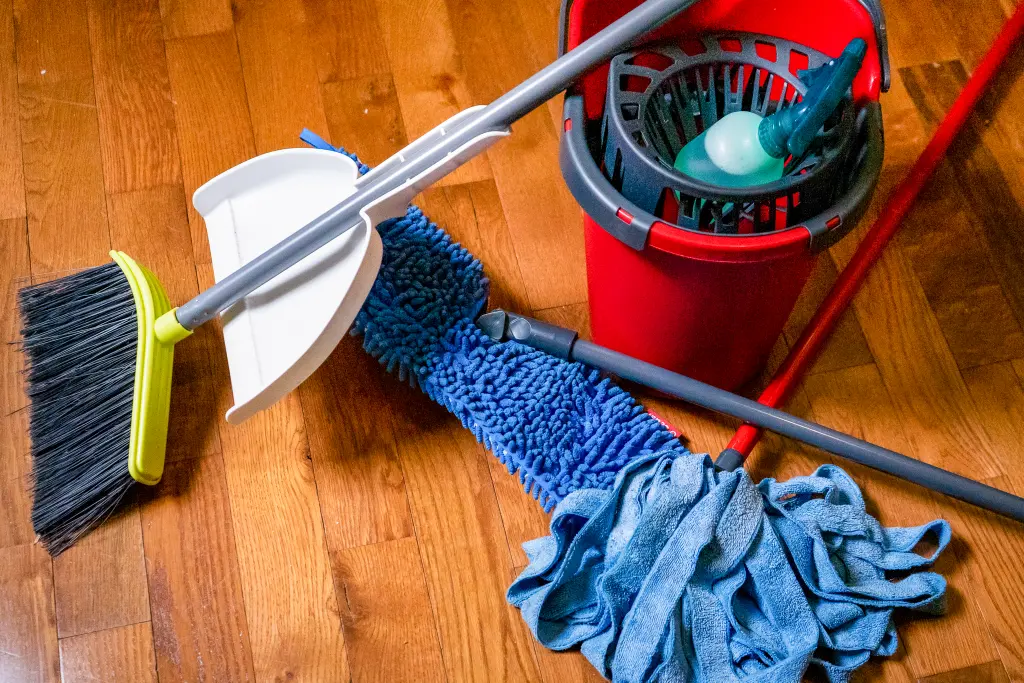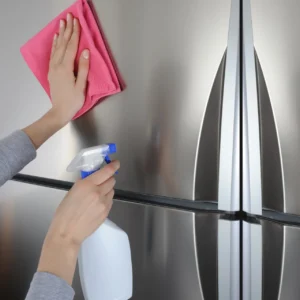Maintaining the beauty and longevity of hardwood floors requires more than just regular sweeping. It’s about using the right techniques and products that won’t harm the wood or the environment.
Natural cleaning methods are not only safe and effective, but they also promote a healthier living space. This comprehensive guide will walk you through various natural cleaning methods and routines to keep your hardwood floors looking their best.
From daily upkeep to tackling tough stains, you’ll find everything you need to maintain the elegance of your floors without resorting to harsh chemicals. Let’s dive into the world of natural hardwood floor care and discover how easy it can be to keep your floors spotless and gleaming.
Understanding Hardwood Floors
Before starting the cleaning process, it’s important to understand the type of hardwood floors you have. Hardwood floors can be categorized into two main types: solid hardwood and engineered hardwood. They also come with different finishes such as polyurethane, wax, or oil. Knowing these details helps in choosing the appropriate cleaning method.
- Solid Hardwood: Made from a single piece of wood, solid hardwood can be sanded and refinished multiple times.
- Engineered Hardwood: Composed of layers of wood, engineered hardwood is more resistant to moisture but can be refinished only a few times.
- Polyurethane Finish: Provides a durable, water-resistant surface.
- Wax Finish: Offers a low-luster, traditional look but requires more maintenance.
- Oil Finish: Penetrates the wood to enhance its natural beauty but needs regular reapplication.
Daily Cleaning Routine
Establishing a daily cleaning routine is crucial to keep your hardwood floors in top condition. Dust and dirt can act like sandpaper, scratching the surface if not regularly removed.
- Sweeping or Vacuuming: Use a soft-bristle broom or a vacuum cleaner with a hardwood floor attachment to remove dust and debris. Avoid vacuum cleaners with beater bars as they can damage the wood.
- Dry Mopping: A microfiber mop is excellent for picking up fine dust and dirt. Microfiber is gentle on the wood and highly effective in capturing particles.
- Spot Cleaning: Address spills and sticky spots immediately using a damp cloth. Make sure not to use excessive water as it can damage the wood.
Weekly Cleaning Routine
In addition to daily cleaning, a more thorough weekly routine helps maintain the floor’s shine and cleanliness.

- Vacuum or Sweep: Start by vacuuming or sweeping to remove surface dirt.
- Natural Cleaning Solution: Prepare a solution by mixing one part white vinegar with ten parts warm water. Dampen a microfiber mop with this mixture, wring it out well, and mop the floor along the wood grain. Ensure the mop is only slightly damp to avoid water damage.
- Dry the Floor: Use a clean, dry microfiber cloth or mop to thoroughly dry the floor after mopping. This step is crucial to prevent moisture damage.
Monthly Deep Cleaning
A monthly deep clean helps eliminate any build-up of dirt and grime that regular cleaning might miss.
- Dust and Vacuum: Begin by dusting and vacuuming the entire floor.
- Deep Cleaning Solution: Mix one part olive oil with ten parts white vinegar and add a few drops of essential oil for a pleasant fragrance.
- Mop the Floor: Use a microfiber mop dampened with the cleaning solution to mop the floor, focusing on areas with more grime.
- Buff the Floor: After mopping, buff the floor with a clean, dry microfiber cloth in circular motions to bring out the floor’s natural shine.
Tackling Stains Naturally
Stains can be tricky, but there are natural solutions to effectively remove them without damaging your floors.
- Water Stains: Create a paste using equal parts baking soda and water. Apply the paste to the stain, let it sit for a few hours, then wipe it off with a damp cloth and dry the area.
- Oil Stains: Sprinkle baking soda on the stain to absorb the oil. Let it sit for a few hours before vacuuming up the baking soda and wiping the area with a damp cloth.
- Scuff Marks: Rub out scuff marks with a soft cloth and a small amount of olive oil. Wipe off any excess oil with a clean cloth.
- Ink Stains: Dab a cloth with white vinegar and gently rub the ink stain. For tougher stains, apply a paste of baking soda and water, let it sit, and then wipe it off.
Preventing Damage

Preventive measures are key to maintaining the beauty of your hardwood floors.
- Rugs and Mats: Place rugs and mats at entryways to catch dirt and moisture. Use rugs in high-traffic areas to minimize wear and tear.
- Furniture Pads: Attach felt pads to the bottoms of furniture legs to prevent scratches when moving furniture.
- Avoid High Heels: High heels can cause dents and scratches. Encourage family and guests to remove them before walking on hardwood floors.
- Trim Pet Nails: Keep your pets’ nails trimmed to avoid scratches.
- Humidity Control: Use a humidifier in dry weather and a dehumidifier in humid weather to maintain a consistent humidity level, preventing the wood from expanding and contracting.
Natural Cleaning Recipes
Here are some natural cleaning recipes to keep your hardwood floors sparkling:
- Basic Floor Cleaner:
- 1 cup of white vinegar
- 1 gallon of warm water
- Mix the ingredients and use a microfiber mop to clean the floor.
- Olive Oil and Vinegar Polish:
- 1 part olive oil
- 1 part white vinegar
- A few drops of essential oil (optional)
- Mix the ingredients, apply to the floor with a microfiber mop, and buff with a clean cloth.
- Lemon Juice and Olive Oil Cleaner:
- 1 cup of lemon juice
- 1 cup of olive oil
- Mix the ingredients and use a microfiber mop to clean and polish the floor.
Cleaning Tools
Having the right tools can make a significant difference in maintaining hardwood floors.
- Microfiber Mop: Essential for daily and weekly cleaning. It’s gentle on the floor and effective at picking up dust and dirt.
- Soft-Bristle Broom: Ideal for sweeping without scratching the floor.
- Vacuum with Hardwood Floor Attachment: Useful for removing dirt from crevices and corners.
- Soft Cloths: Necessary for spot cleaning, drying, and buffing the floor.
Additional Tips
- Avoid Excess Water: Hardwood floors are sensitive to water. Always use a damp (not wet) mop and dry the floor immediately.
- Test Cleaning Solutions: Before using any cleaning solution, test it on a small, inconspicuous area to ensure it doesn’t damage the finish.
- Regular Maintenance: Regularly reapply oil or wax finishes as required to keep the floor protected and looking its best.
- Professional Help: Consider professional cleaning and refinishing services every few years to maintain the floor’s appearance and durability.
Conclusion
Natural cleaning methods are not only safe and effective but also easy to incorporate into your regular cleaning routine. By understanding your hardwood floor type and finish, following daily, weekly, and monthly cleaning routines, and using natural cleaning solutions, you can keep your floors looking beautiful and extend their lifespan.
Preventive measures and proper cleaning tools further ensure your hardwood floors remain in top condition. With these natural cleaning techniques, maintaining the elegance of your hardwood floors is simple and rewarding, allowing you to enjoy their beauty for many years to come.




